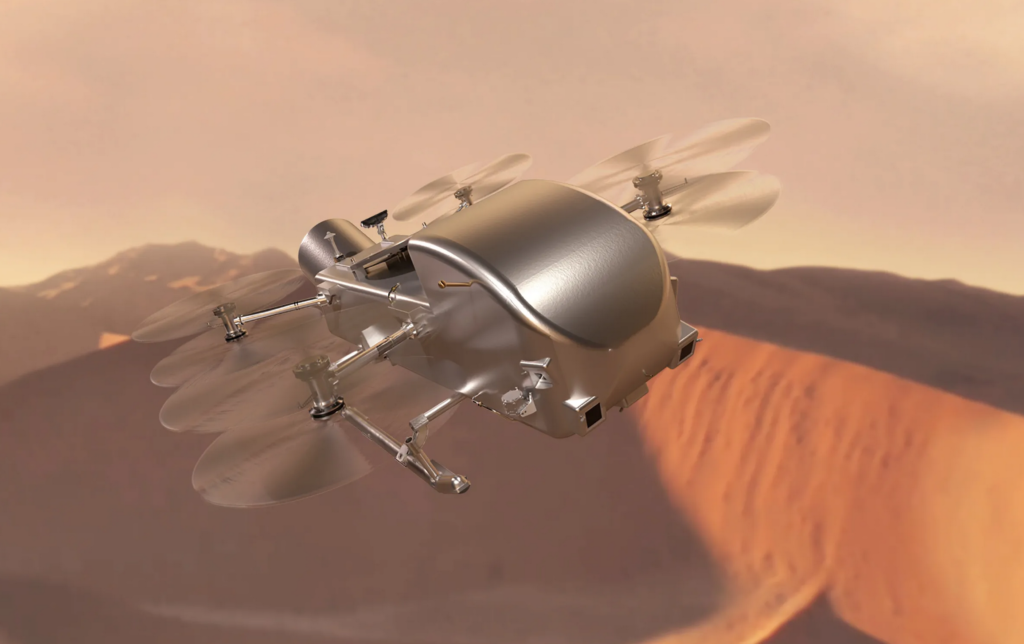After years of delay due to COVID-19 and a series of cost overruns, NASA recently approved the 2028 interplanetary mission of the nuclear-powered Dragonfly rotorcraft to explore Saturn’s largest moon, Titan.
Being 746 million miles (1.2 billion km) far from Earth, Titan is one of the most difficult bodies in the solar system to explore. Not only the largest moon of Saturn, but Titan is also the second largest in the solar system. In addition, it is also the only one of two moons with a substantial atmosphere, which is denser than that of our Earth.
Not only attracting scientific explorers despite the hefty price tag to get there, Titan is also an organic chemist’s dream. Because it mostly consists of nitrogen, Titan’s atmosphere has significant amounts of methane, a lot more than the present ~2.7%. Most of the methane has been converted by the Sun into complex hydrocarbons forming into clouds and rain down on the surface that later creates lakes of methane, ethane, and other compounds.
While exploring the Moon or Mars is now simple as it requires only a simple lander with wheeled rovers capable of trundling from place to place, Titan is more like a swamp consisting of petroleum byproducts, making it a more ambitious mission needing something more mobile.
After the recent end of NASA’s Ingenuity Mars helicopter mission, which was supposed to last a month but went on for about three years, the space agency seems to want to focus more on autonomous rotorcraft technology.
Dragonfly can hop from place to place to explore the landscape and the boggy shores of Titan can fit the bill. The Dragonfly is powered by a radio thermal generator and flying on aluminum/titanium rotors. It can make a general geological survey, study organic chemistry, and seek out biosignatures on Titan.
Titan is seen more as an example of what rises to life on Earth rather than a good candidate for extraterrestrial life.
Dragonfly would fly from one site to the next along with the use of its sensors, including a radiation backscatter system and a mass spectrometer to study the chemistry of Titan. It also allows scientists to learn more about the interior structure of Titan by recording the local weather and seismology.
Article and Image Credit: NASA






